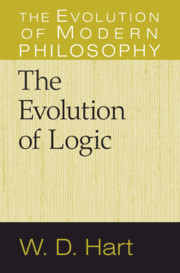Book contents
Four - The Universe and Everything
Published online by Cambridge University Press: 05 June 2012
Summary
Here is a picture of a simple instance of truth.The example is John Austin’s. The picture has two parts: what is true, and what makes it true. As we have mentioned, the things that are true or false are articulated into smaller bits that are neither true nor false but pick out the subject matter that makes for truth. Even if one favors abstract propositions or mental judgments as bearers of the truth values, still, sentences wear their articulation into such smaller bits, words, on their inscribed faces, and that articulation seems to get read back into propositions (as concepts) or judgments (as ideas). Tarski took the sentences themselves as the truth bearers.
Traditional grammar teaches that every sentence has a subject and a predicate. While that dictum remains a basic principle of composition, the logicians reconceived it in several ways. In the first place, one of the major achievements of nineteenth-century logicians like Peirce and Schröder was to begin a systematic taxonomy of relations. It is basic here that while earlier only unary properties (like being red or being round) received sustained attention, now binary relations (like loving or being above), ternary (like a giving b to c), and so on got equal billing. It was as if where traditional grammarians had assumed each sentence has a unique subject, now logicians ignored declension (subject, direct object, indirect object, possessive, and so on) and treated the two, three, or however many singular terms to which a binary, ternary, or whatever polyadicity predicate is applied to make a simple sentence, all as several subjects of that single predicate. In Austin’s example, the predicate is “is on” for the binary relation of superposition, and the two subjects are “the cat” and “the mat.”
- Type
- Chapter
- Information
- The Evolution of Logic , pp. 89 - 122Publisher: Cambridge University PressPrint publication year: 2010



